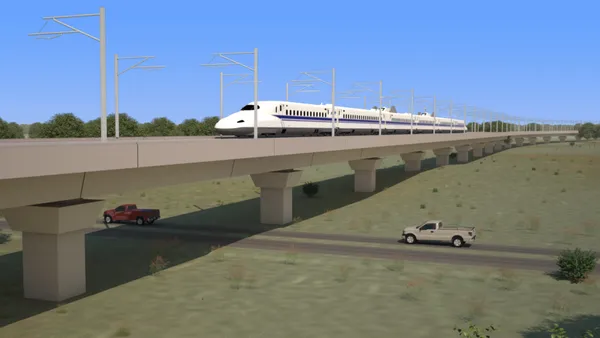Dive Brief:
- The Rocky Mountain Institute (RMI) this week published an insight brief, in collaboration with General Motors (GM), detailing the hurdles and opportunities of ride-hailing electrification and its urgency amid the current climate crisis.
- To evaluate these factors, RMI analyzed data from both electric- and gasoline-powered rental vehicles on the Maven Gig platform, a GM-backed car-sharing service that offered weekly, fixed-rate rentals to gig workers. Maven launched in 2016 and reached nearly 20 North American markets before shutting down amid the pandemic in April 2020.
- RMI's brief listed technological capability, financial competitiveness and charging infrastructure as the three major barriers to electrification across major transportation network companies (TNCs). To overcome these barriers, RMI detailed recommendations that fall into four broad categories: increasing access to L2 charging; lowering the cost of DC fast charging; lowering the initial barrier to electric vehicle (EV) ownership and usage; and reducing the cost of charging for TNC drivers.
Dive Insight:
With road vehicles accounting for nearly three-quarters of the transportation sector's carbon emissions, ride-hailing vehicles are the "perfect candidates for electrification" to further support emissions reduction efforts, RMI reports.
Due to their high mileage — a full-time ride-hailing vehicle averages 40,000 miles each year, RMI found — the benefits of electrifying TNC vehicles are three times greater than the benefits of electrifying a gas-powered personal vehicle, according to a recent study from UC Davis.
GM's Maven Gig platform illustrated a "unique opportunity" for data analysis on this topic, due to the platform's use of both electric and gasoline vehicles in a number of metropolitan areas, said brief co-author and RMI principal EJ Klock-McCook.
"What that allowed us to do was a direct comparison between how electric vehicles were operating and how gasoline vehicles were operating in the otherwise exactly same context," he said.
And though Maven was a short-lived venture, the brief suggests ride-hailing companies are ripe for electrification — and many TNCs have already marketed their efforts to bring more EVs to their platforms. In June 2020, Lyft pledged for all vehicles on its platform to be electric by 2030, with Uber committing to an all-electric platform by 2040 just a few months later.
A key challenge, however, is getting drivers in those electric cars. Lyft took a page from Maven's book when it launched its Express Drive rental car partner program, which enables drivers to reap the benefits of low fuel costs without the commitment of purchasing an EV. Uber also has a car rental partnership with Avis and will commit $800 million to assist driver transitions to EVs, including an extra $1.50-per-ride incentive for transitioning to a hybrid or electric vehicle.
"The full-on purchase of an EV, while that potentially has the greatest long-term economic benefit for the driver, it's also the highest hurdle to cross. Big capital outlay, commitment to a new technology, all of these things," Klock-McCook said. He pointed to such short-term rental options as "gateways" to electrification.
One likely hurdle to electrification not detailed in RMI's brief is the question of full-time employment status for TNC drivers. This topic sparked a clash just months ago in California as TNCs including Uber and Lyft opposed the state's gig worker classification bill, AB5, with a proposition of their own to maintain contract status for their drivers (Prop 22). That measure was approved by voters.
While driver classification does not have a direct impact on electrification efforts, it's possible that such full-time classification could further incentivize drivers to commit to the long-term use of EVs. RMI said it does not have an official stance on the classification debate, though Klock-McCook said full-time driver employment status could enable a TNC to "stipulate" the use of EVs.
New federal leadership under the incoming Biden administration could also accelerate this electrification effort. Klock-McCook pointed to the interstate system, noting that it's an area of opportunity where the federal government could further support EVs through the widespread deployment of charging infrastructure.











